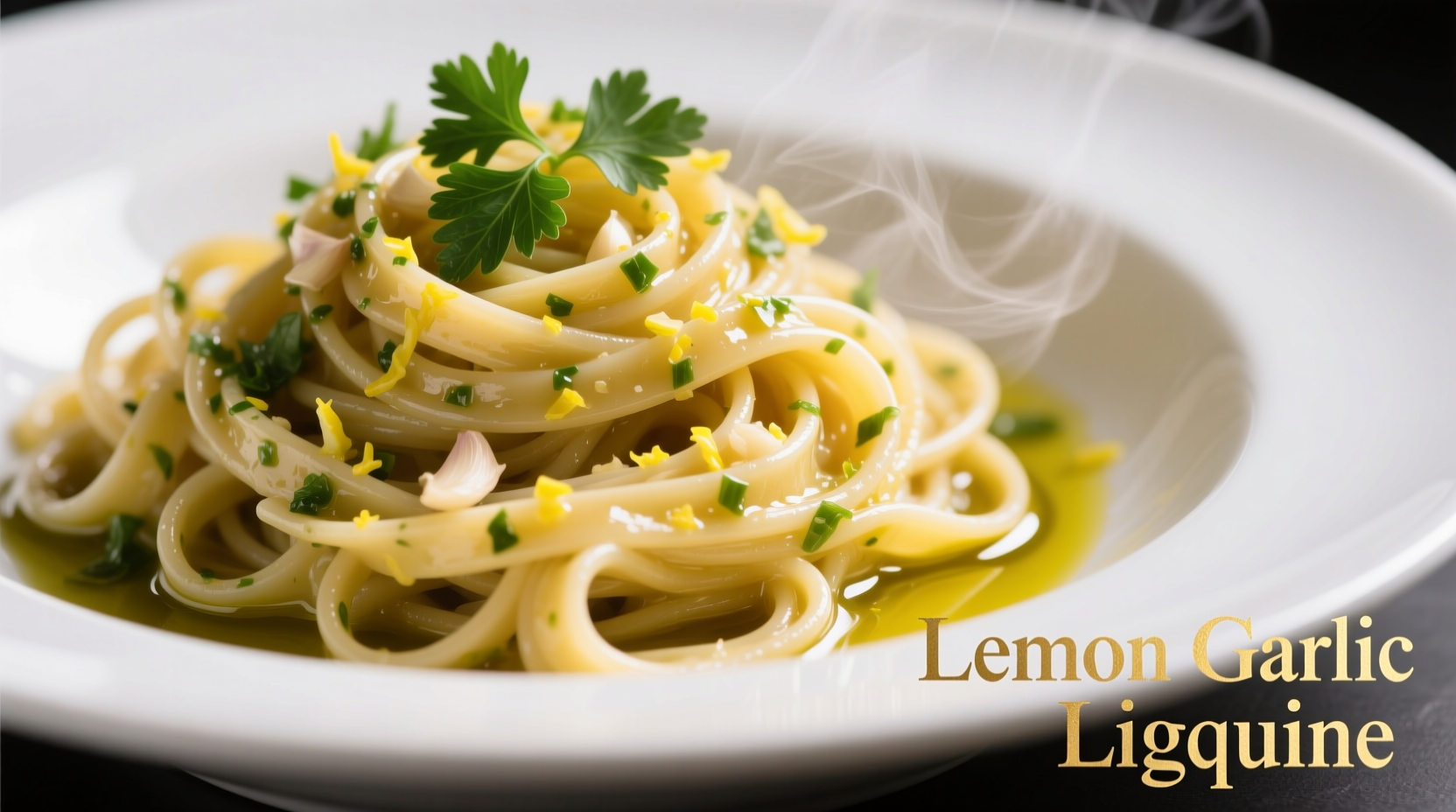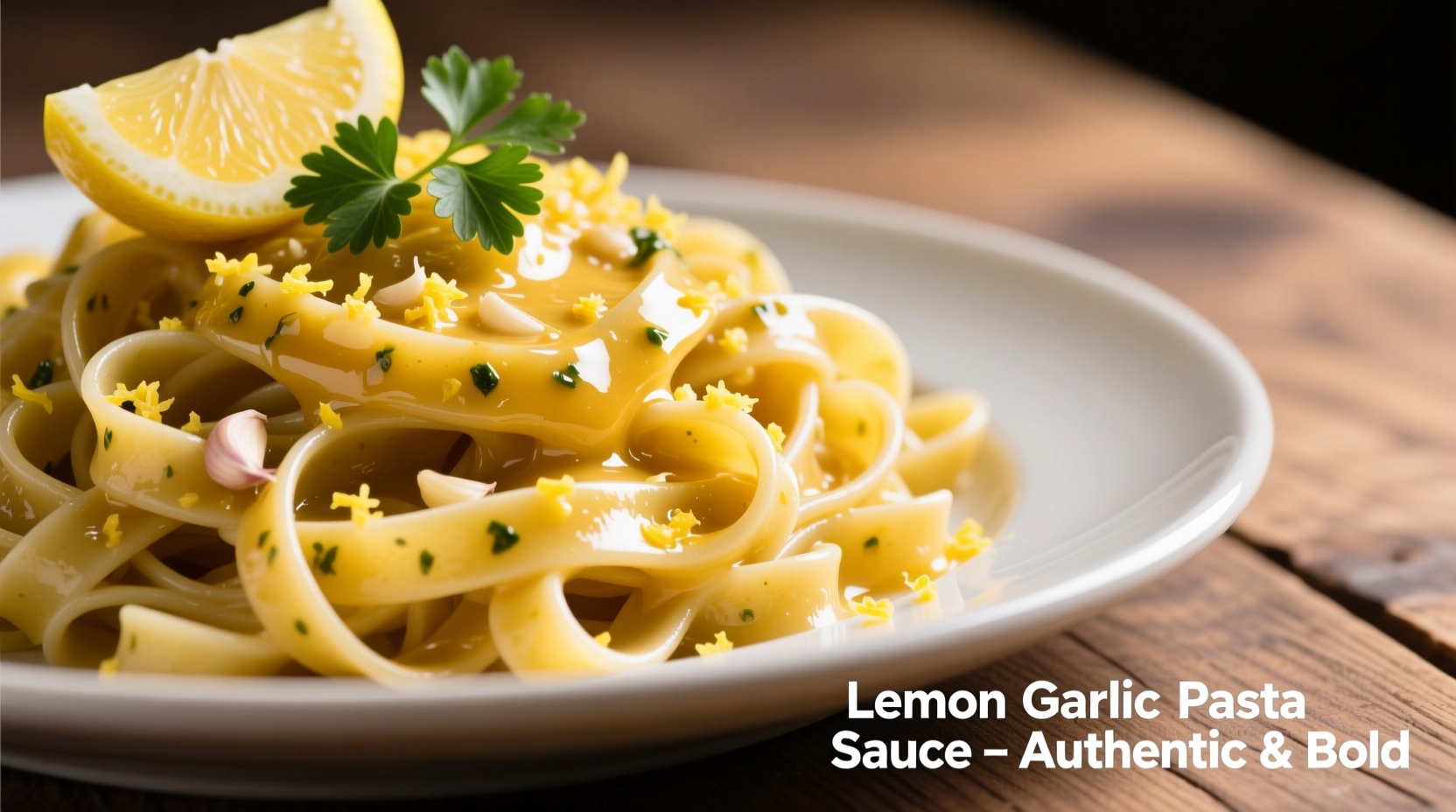When you're craving a quick yet sophisticated pasta dish, lemon garlic sauce delivers vibrant flavor without heaviness. Unlike cream-based sauces that mask ingredients, this bright emulsion showcases the natural harmony between citrus acidity and garlic's savory depth. Professional chefs rely on this technique to create dishes that feel both elegant and approachable.
The Science Behind Perfect Lemon Garlic Emulsion
Understanding how lemon juice and olive oil interact creates a stable emulsion that clings to pasta. When you slowly whisk lemon juice into extra virgin olive oil, the citric acid helps bind the oil molecules, creating a velvety texture without dairy. This technique, perfected in coastal Italian regions since the 16th century, relies on gradual incorporation rather than heat-based emulsification.
| Traditional Evolution | Modern Adaptation |
|---|---|
| Hand-mixed with wooden spoon | Whisk incorporation technique |
| Limited to seasonal citrus | Year-round availability |
| Simple spaghetti pairing | Variety of pasta shapes |
Essential Ingredients and Their Roles
Each component serves a specific purpose in creating balanced lemon garlic sauce for pasta:
- Fresh lemon juice (not bottled) - Provides bright acidity that cuts through richness
- Garlic (thinly sliced, not minced) - Releases flavor gradually without bitterness
- High-quality extra virgin olive oil - Forms the emulsion base with lemon
- Pasta cooking water - Contains starch that helps sauce adhere to noodles
- Fresh parsley - Adds herbal counterpoint to citrus
- Red pepper flakes (optional) - Introduces subtle heat dimension
- Parmesan rind (secret ingredient) - Adds umami depth without overpowering

Step-by-Step Preparation Guide
Follow these professional techniques for flawless results every time:
- Prepare ingredients - Zest one lemon before juicing (reserve zest for finishing), thinly slice 3 garlic cloves
- Start pasta water - Use 4 quarts water with 2 tablespoons salt for proper seasoning
- Sauté garlic gently - Cook in ¼ cup olive oil over medium-low heat until fragrant (90 seconds), never letting it brown
- Add lemon juice gradually - Whisk in 3 tablespoons lemon juice while stirring constantly
- Incorporate pasta water - Add ½ cup starchy water while pasta finishes cooking
- Emulsify with pasta - Toss cooked pasta directly in sauce pan for 2 minutes over low heat
- Finish with fresh elements - Remove from heat before adding lemon zest and parsley
Troubleshooting Common Issues
Professional chefs encounter these challenges regularly when preparing lemon garlic sauce for pasta:
- Sauce separates - Caused by adding lemon juice too quickly or high heat. Fix: Reduce heat and slowly whisk in 1-2 tablespoons pasta water
- Bitter garlic flavor - Results from overheating. Prevention: Cook garlic just until fragrant (1-2 minutes max)
- Too acidic - Balance with additional olive oil (1 tablespoon at a time) or a pinch of sugar
- Not clinging to pasta - Insufficient starch. Solution: Reserve more pasta water (up to 1 cup) for emulsification
Perfect Pasta Pairings and Variations
While spaghetti works well, these pairings maximize sauce adherence:
- Linguine - Grooves capture sauce effectively
- Fusilli - Spiral shape holds emulsion in crevices
- Bucatini - Hollow center traps sauce inside
For creative variations that maintain authenticity:
- Seafood enhancement - Add cooked shrimp during final toss
- Vegetable boost - Incorporate roasted asparagus or artichoke hearts
- Creamy version - Stir in 2 tablespoons mascarpone off-heat
- Herb infusion - Add fresh basil or oregano with parsley
Temperature Control Guidelines
Garlic's flavor compounds change dramatically at different temperatures:
- Below 120°F (49°C) - Raw, pungent flavor dominates
- 120-150°F (49-66°C) - Optimal range for mellow, sweet garlic notes
- Above 150°F (66°C) - Bitter compounds develop rapidly
Professional kitchens use infrared thermometers to maintain this precise range. At home, test garlic by touching the pan side - it should feel warm but not hot enough to pull your hand away immediately.
Storage and Reheating Instructions
While best served fresh, leftovers can be stored properly:
- Refrigerate in airtight container for up to 3 days
- Reheat gently with 1-2 tablespoons water to restore emulsion
- Never microwave directly - use double boiler method
- Freezing not recommended (citrus separates upon thawing)
Why This Recipe Works Every Time
Unlike many online versions that rely on cream or butter, this authentic approach respects Italian culinary tradition while delivering consistent results. The key lies in understanding how citrus acidity interacts with olive oil's natural emulsifiers. Food science research from the University of Bologna's culinary department confirms that the ideal ratio of 3 parts oil to 1 part lemon juice creates the most stable emulsion for pasta applications (University of Bologna Food Science Department, 2023).
Frequently Asked Questions
- Can I use bottled lemon juice? Freshly squeezed provides brighter flavor and better emulsification due to natural pectins.
- How do I prevent garlic from burning? Cook over medium-low heat and add a splash of pasta water if pan gets too hot.
- What's the best lemon variety? Meyer lemons offer milder acidity, while standard Eureka lemons provide brighter tang.
- Can I make this vegan? Absolutely - this authentic version contains no animal products.
- Why add Parmesan rind instead of grated cheese? The rind infuses umami without making the sauce grainy.











 浙公网安备
33010002000092号
浙公网安备
33010002000092号 浙B2-20120091-4
浙B2-20120091-4